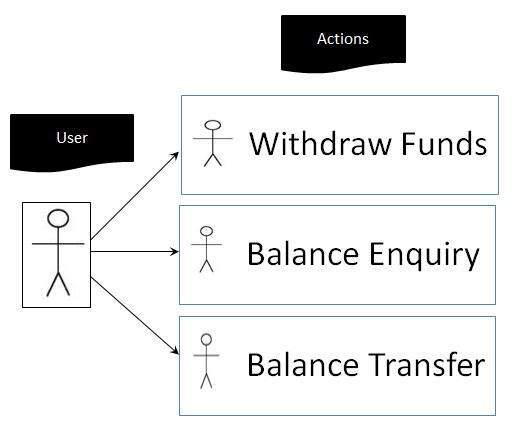
Use Case Testing
Software testing involves the verification of the end to end scenarios and use cases. The software use case testing is done to detect the test cases that validates the complete software from the beginning to the end.
What do You Mean by a Use Case?
A use case is a tool used for describing the mandatory user communications. It also helps to generate a new software or to make updates to the already existing one after several rounds of discussions. It has a major part to play in the software development life cycle (SDLC).
A use case relies on the end users activities and how the software responds to these activities. It is totally dependent on the actions of the users rather than software. It comprises a group of items executed by an end user or actor while he uses the software. Thus, a use case generally describes the functional specifications of the software.
A use case helps to determine the interface, and integration issues that come up while various modules of the software are integrated. It helps in developing architecture, and design of the software, thereby making the requirements more clear, and descriptive.
Who Creates a Use Case?
In the first stage, the customer shares their requirement specifications of the software with the development team. Based on these requirements, the development team comes up with the use cases. Once they are finalized, they are again shared with the customers for their feedback.
After all the use cases are approved from the clients side, the development team begins with architecture, design, and implementation of the code. Besides, the test teams develop the test cases based on those same use cases.
What is Software Use Case Testing?
The software use case testing is a concept under the black box testing. It is focused on verifying the test scenarios which deals with the complete software with steps starting from the beginning to the end. The business analysts and developers should be on the same page with respect to the understanding of software requirements.
The software use case testing is basically a part of the functional testing. Its primary objective is to detect, and validate the scenarios on the complete software. It is done to verify the end to end flows in the system. It determines the integration issues in the software which remain undetected while a single module is tested. The use case test cases can be very helpful while creating the system, and integration level test cases.
Features of Software Use Case Testing
The features of the software use case testing are listed below −
- The use case testing mainly works on the user interactions, and scenarios with the software. It verifies the outputs generated by software with a specific set of user inputs.
- The use case testing uses all the user interactions with the system as a framework for managing the tests. It confirms that the software is able to function at par in order to support the users in the real environment.
- The use case testing ensures that the software has all the necessary specifications to validate all the use cases. It also verifies if the functional requirements are working correctly.
- The use case testing involves both positive and negative testing which identifies issues in different circumstances.
- The use case testing supports the integration testing by identifying defects while various modules, and sub-modules communicate with each other.
Example
The Below example clearly shows the interaction between users and possible actions.

Advantages of Software Use Case Testing
The advantages of the software use case testing are listed below −
- The software use case testing minimizes the complexities as it deals with a particular transaction at a time.
- The software use case testing is done with the end users view points and detects bugs that come while performing the user interactions.
- The software use case testing verifies the functional requirements of the software.
- The software use case testing begins with the easy view of the software, and is primarily dedicated to verify the end user scenarios.
Disadvantages of Software Use Case Testing
The disadvantages of the software use case testing are listed below −
- If a use case is not included in the use case document, it shall directly affect the use case testing and the test case covering that particular use case shall be missed.
- The use case testing only deals with the functional requirements of the software.
- It is impossible to achieve hundred percent test coverage with the use case testing since it covers only the user specific scenarios with the software.
Conclusion
This concludes our comprehensive take on the tutorial on Software Use Case Testing. Weve started with describing what do you mean by a use case, who creates a use case, what is software use case testing, what are the features of the software use case testing, what are the advantages of the software use case testing, and what are the disadvantages of the software use case testing. This equips you with in-depth knowledge of the Software Use Case Testing. It is wise to keep practicing what youve learned and exploring others relevant to Software Testing to deepen your understanding and expand your horizons.